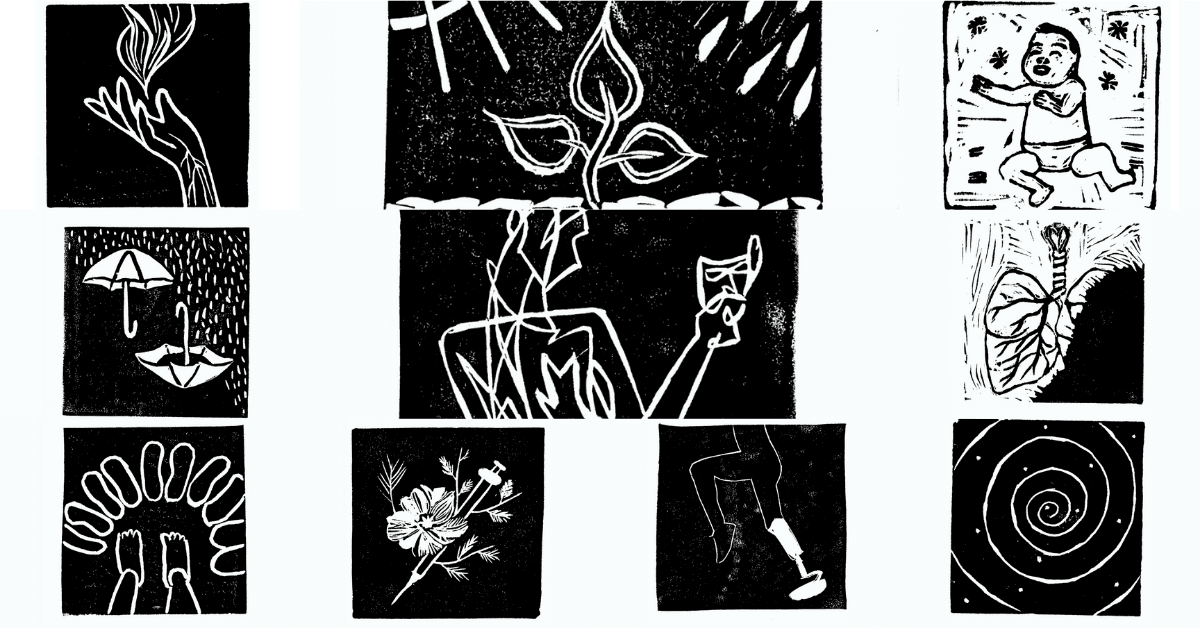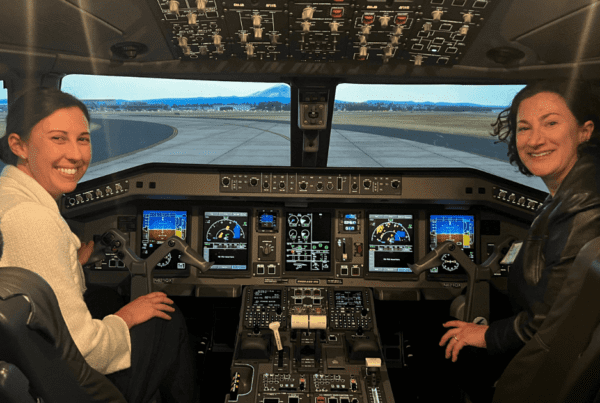HIGHLIGHTS | Using art to reconnect
- First year medical students participated in the (Im)Printed art exhibition as part of their Foundations of Clinical Medicine course.
- The art exhibition encouraged reflections on identity, relationships and purpose.
- The students’ art was displayed for viewing at UW Medical Center – Montlake’s Sky Gallery through Jan. 31.
The pandemic has impacted everyone in a myriad of ways, leaving many people searching for ways to reconnect with others and, most importantly, themselves. Healthcare workers are no exception to this experience, but often struggle to find time to practice this type of self-care and outreach due to the long hours they’ve worked during the last two years of the pandemic.
As part of the Foundations of Clinical Medicine course, first year medical students having spent a long year of mostly remote classes were able to tackle the need for self-reflection and reconnection with the (Im)Printed Art Exhibition, an art program funded by the School of Medicine.

(Im)Printed art
What is the (Im)Printed Art Exhibition?
With the high-stress and quick-moving nature of the healthcare industry right now, it’s possible for students and providers to become disconnected with each other. Healthcare professionals are at their best when they can lean on each other for support and collaboration — a practice that seems to take a little more intentionality in these times. The art exhibition successfully achieved this, giving students insight into the minds of their colleagues.
The art show encouraged students to create images that represented their personal identity. The students used printmaking to create these images, which reflected their strength, cultural identities or their journey through practicing medicine.
“Creativity and science sometimes feel like opposites,” says Andrea Kalus, MD. “Allowing people to have the opportunity to express themselves creatively, even if they doubt their ability, can often surprise them.”
Combining art with science gives the students the opportunity to explore and understand their personal narrative and how their identity can integrate in their medical practice.
In addition to the self-reflective benefits of the art creation, Kalus also emphasized the collective nature of the art. One success from the art exhibition came from the ways in which the students were able to connect with each other through their art expressions, an aspect Kalus hoped to achieve.
“This art exhibition is an opportunity to reconnect us to what brought us to this profession and to provide words of encouragement, insight and support for these new doctors in the making,” says Karen Neuhard-Forsythe, UW Medical Center Art Program Manager.

(Im)Printed art.
Impact of the art
The art exhibition was on display to encourage the UW Medicine community to view the art and reconnect with aspects of their own identity. There was a hope that community members might also reconnect with their purpose in healthcare and reflect on their motivations for working in the healthcare field — especially during stressful times.
“This was so successful with the students that we intend to do it with a class of students annually,” Kalus says. “We’ve commissioned an instillation that will be in the medical school to display the students’ art. There will be new additions as more classes have the experience.”
Practice self-reflection
If you are interested in practicing your own form of self-reflection or trying to reconnect with your motivation to work in healthcare, you can use these questions:
- What strengths do you bring to healthcare?
- What is something about you that improves the care of patients?
- What is something about you that uplifts your colleagues in this shared work?
- What aspects of your personal or professional identity have you held tightly or found valuable through your education, training and career?


